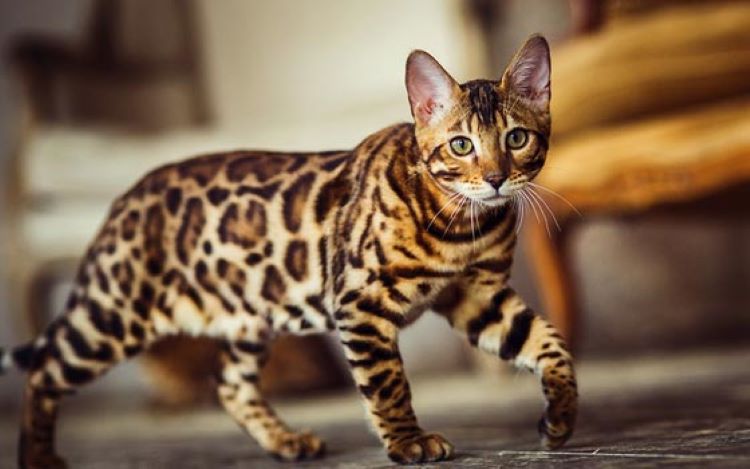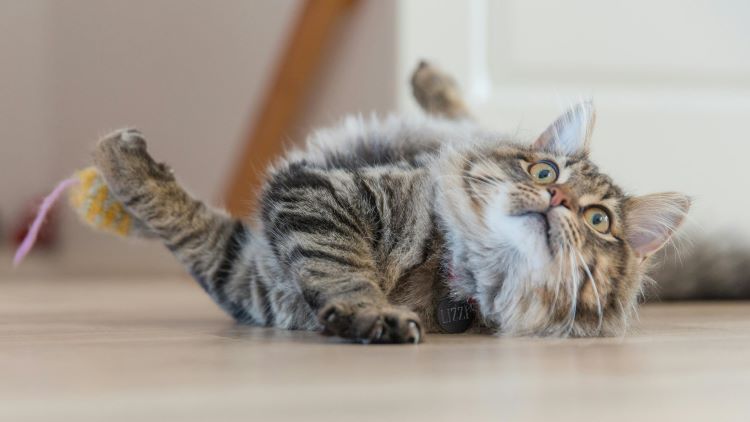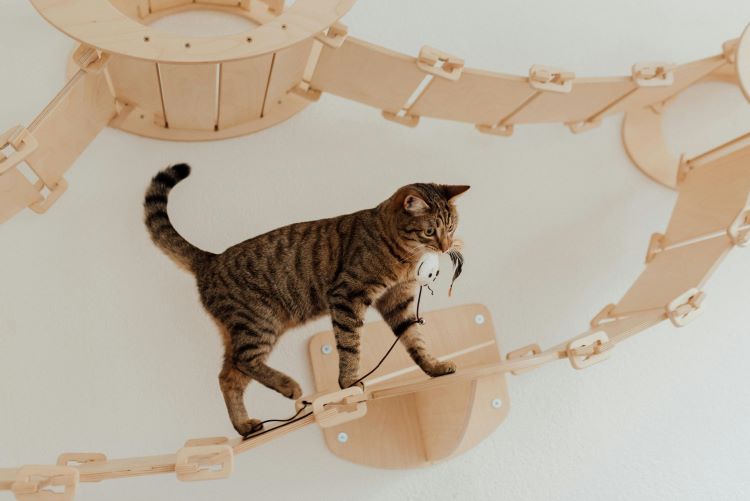Ready to help treat your pet to a healthy life?
How Much Exercise does Your Cat Need a Day?
By : CJ Silvasi | Published Apr 11, 2025

Cats are known for their ability to lounge and nap for hours at a time, but like their human companions, they need to balance that with daily exercise to stay fit and healthy. Whether you’re a seasoned cat owner or considering adopting a new furry friend into your life, understanding how much exercise cats need daily is an important part of responsible pet parenting.
You’ll want to talk with your pet’s veterinarian about their specific health needs (including daily activity). But in case you don’t have an appointment anytime soon or are just looking to boost your knowledge, this quick guide to cat exercise is here to help. Let’s delve into the importance of exercise for cats, how much they truly need, and some fun ways to keep them engaged.
The importance of exercise for cats
Physical activity is critical for all living creatures to be healthy, and cats are no exception. Cats who get regular exercise are less likely to be overweight, reducing their risk for a wide range of health conditions. Though the positive effects aren’t just physical ones — regular physical activity helps cats engage their minds, improving overall quality of life.
Cats who aren’t getting enough physical and mental enrichment are also more likely to misbehave. The excess energy can be expressed in destructive or even violent behavior. A great way to avoid clawing and biting from your cat is to encourage exercise every day.
Indoor cat vs. outdoor cat exercise needs
Outdoor cats will (usually) have naturally lower exercise needs than indoor cats because they fulfill them while outside. The exceptions here of course are cats who just go out and lounge on the patio all day rather than spending hours exploring, climbing around, and chasing prey. In contrast, indoor cats are generally less stimulated by their interior surroundings and may become more easily sedentary. As a result, they benefit greatly from regularly encouraged exercise and play.
How much daily exercise should cats get?
The specific amount of exercise your cat needs will not only vary based on their indoor or outdoor cat status but also their age and size. So, it’s always wise to talk with your pet’s veterinarian about their specific exercise needs. That said, most vets agree that the average cat needs approximately 30 minutes of exercise daily. However, this doesn’t necessarily mean your pet needs one long, vigorous play session a day to accomplish this. Instead of burning all their energy at once, cat exercise can be broken into shorter sessions that add up to their daily goals. This helps strike a balance between play and relaxation, promoting your kitty’s health and happiness.
If your cat is currently obese and needs to lose weight, their exercise needs may be different than those of the average cat. They will also have different dietary requirements as part of their weight loss program. Again, be sure to talk to your vet about your cat’s specific energy levels and athletic needs to reach their health goals.

How to exercise your cat
Helping your cat meet their daily exercise needs can be as simple as installing vertical play areas. By giving your cat a space to jump and climb, you’re encouraging their physical activity. However, don’t limit their exercise to just that. As mentioned earlier, exercising your cat provides mental stimulation, so incorporate various playtimes into their exercise routine.
Each cat is unique, so it’s important to find the physical activity that is most appealing to your cat. Our feline friends are natural hunters, and chasing, pouncing, and stalking are all part of their natural instincts. If you notice your cat is more drawn to one of those activities, incorporate it into your play and exercise sessions to keep them engaged.
4 tips to help meet your cat’s exercise needs
If your cat seems lazy or stubborn (more so than the usual cat at least), ensuring they are getting enough physical activity can be a challenge. Here are four ways to help encourage even the laziest cats to get up and move.
1. Exercise with your cat
Take advantage of the time you’re trying to get your cat to exercise by exercising with them. If you already have an exercise routine set up, find ways to involve your feline friend. For example, while you are doing cardio, weight lifting, or even crunches, hold a laser pointer so it bounces with your movement. Also, if your cat is willing, invest in a cat harness and leash and incorporate them into your daily walks.
2. Build a cat gym
In addition to adding vertical spaces for your cat to jump and climb, consider investing in a kitty treadmill* to get your cats moving on their own schedule. Keep it in a space your cat already likes to be in to encourage regular use. Other great toys and tools to keep your kitty fit are:
- Wall-mounted shelves — Select shelves that are designed for cats to ensure they are both safe and able to support your cat’s weight.
- Cat play tunnels — Tunnels make fun spaces to hide and run. They’re the perfect place for kitties to play chase!
- Electronic toys — No kitty gym is complete without a little tech. Electronic toys move on their own to encourage your cat to chase them.
- Build a catio — If you have the space, adding an enclosed cat patio or “catio” is a great way to keep your indoor cat safe while giving them a place for an adventure outside.
*Trupanion does not receive compensation for any external links in this article. Linked products exist for informative purposes only.
3. Play with your cat
Cats love to play, and if you are involved in play time not only are is your cat meeting their daily exercise needs, but they are also bonding with you. Invest in cat toys like wands, lasers, and remote-controlled toys and spend some quality time with your feline companion.
On that note, it’s a good idea to frequently rotate your cat’s toys that are out. Providing them with a bunch of different toys helps engage your kitty’s brain and playfulness, but they’ll become quickly bored with access to the same old lineup all the time. Leave just a few out at a time and be sure to engage in playtime directly with your cat.
4. Get another cat
If your space and cat’s personality allow, you may want to consider adopting a second cat. This is a big decision that should not be taken lightly, but the right furry friend can become a great playmate for your current cat (especially if they are both still young). Make sure you select a cat that gets along with your current cat, however. Not only will this be crucial for harmony within the home, but they are more willing to play and chase each other through the house if they enjoy one another’s company.
5. Talk with your vet
Ultimately, the goal of exercising your cat is to keep them as healthy as possible, so involving your vet is a crucial part of the process. Before you start changing up your cat’s exercise routine, go ahead and schedule an appointment. Ask about specific recommendations for your cat’s breed and lifestyle. You’ll also want to ask about your pet’s current weight and if they’re within a healthy range. If they aren’t, your veterinarian will be able to offer guidance on your pet’s diet as well as their exercise needs.
While you’re at it, take a look at your cat insurance options. A good plan won’t make your cat exercise, but it will help cover new and unexpected health conditions that may come about in their lifetime.

Keeping your cat happy and healthy through exercise
Ensuring your cat gets enough daily exercise is key to maintaining their physical health and mental well-being. By incorporating regular play sessions, providing engaging environments, and exploring creative ways to keep them moving, you can help your feline friend stay active and happy.
Remember, consistency is key, and consulting with your vet will ensure that your cat’s exercise routine is safe and effective. A healthy, active cat is a happy cat — that means more purrs, playtime, and bonding moments for you both.
Do you have everything you need for your cat? Look over this cat supplies checklist to make sure.
